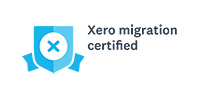The VAT domestic reverse charge for building and construction services comes into effect from 1 October 2019. Although some of the detail may change in the months to come, given the scale of the changes envisaged, it would be appropriate for businesses to start planning for them now. This post provides a summary of the upcoming changes, for a full analysis please download our briefing: Changes in the Construction Industry (May 2019).
Overview
The reverse charge represents part of a government clamp-down on VAT fraud. Large amounts of VAT are lost through ‘missing trader’ fraud. In this type of fraud, VAT is charged by a supplier, who then disappears, along with the output tax. The VAT is thus lost to HMRC. Construction is considered a particularly high-risk sector because of the potential to make supplies with minimal input tax but considerable output tax.
The reverse charge does not change the VAT liability: it changes the way that VAT is accounted for. In future the recipient of the services, rather than the supplier, will account for VAT on specified building and construction services. This is called a ‘reverse charge’.
The reverse charge is a business to business charge, applying to VAT-registered businesses where payments are required to be reported through the Construction Industry Scheme (CIS). It will be used through the CIS supply chain, up to the point where the recipient is no longer a business making supplies of specified construction services. The rules refer to this as the ‘end user’.
Broadly then, the reverse charge means that a contractor receiving a supply of specified construction services has to account for the output VAT due – rather than the subcontractor supplying the services. The contractor then also has to deduct the VAT due on the supply as input VAT, subject to the normal rules. In most cases, no net tax on the transaction will be payable to HMRC.
The charge affects only supplies at standard or reduced rates where payments are required to be reported via CIS.
How will the scheme operate?
A VAT-registered business, receiving a supply of specified services (see below) from another VAT-registered business, for onward sale, on or after 1 October 2019:
- should account for the output VAT on supplies received through its VAT return
- does not pay the output VAT to its supplier on supplies received from them
- can reclaim the VAT on supplies received as input tax, subject to normal VAT rules.
The supplier should:
- issue a VAT invoice indicating the supplies are subject to the reverse charge.
An end user should:
- notify its end user status, so the supplier can charge VAT in the usual way
Impact on business
Details of the charge have changed since first announced. The charge was originally to apply to ‘labour only’ supplies. Now, however, the charge applies to construction services including materials. This gives the legislation wider application than first suggested.
With the domestic reverse charge, the value of reverse charge supplies will not count towards the VAT registration threshold of the recipient business.
For many construction businesses, the change is likely to have far-reaching consequences. Processes will need to be in place to ensure VAT accounting systems are compliant with the unusual requirements of the reverse charge. And given that output VAT currently provides many businesses in the supply chain with a positive cash flow advantage, the impact on cash flow and liquidity will also need appraisal.
Businesses using the VAT flat rate scheme (FRS) may find that the new rules work against them. We should be pleased to review your individual circumstances to establish whether the FRS will still be of benefit to you, or whether withdrawal from the scheme would be more advantageous.
Planning for change
The new rules will have a significant effect on VAT compliance and cash flow. We therefore recommend planning to accommodate this well before the October deadline. Key areas to consider now include:
- Is the reverse charge likely to apply to supplies to and from other VAT-registered contractors and sub-contractors you deal with?
- How will your accounting systems calculate and report reverse charge supplies?
- How will you check on an ongoing basis that supplies and purchases are treated correctly?
- Will your cash flow suffer if you no longer hold output tax, and what can be done to compensate for this?
- What training will staff require to deal with the new rules?
- Is there additional information you will need from your customers and how will you obtain this?
- If you use the VAT Flat Rate Scheme, how will the charge impact you?
Overall, the change means that the construction sector is likely to be subject to considerable HMRC scrutiny in the foreseeable future. Under the new rules, for example, some sub-contractors, with VAT to reclaim on inputs, but no VAT to charge on outputs, will regularly receive VAT refunds. A regular repayment position could trigger a VAT inspection. For these reasons, we would recommend taking stock of VAT and CIS compliance across the board.
How we can help
In this post we have only been able to touch on some of the issues involved, further information is available in our briefing on this topic, downloadable below.
Please contact us for an in-depth discussion if you are concerned about the impact of these changes on your business. We can also advise on cash flow and financial management strategies to help your business adapt successfully.










